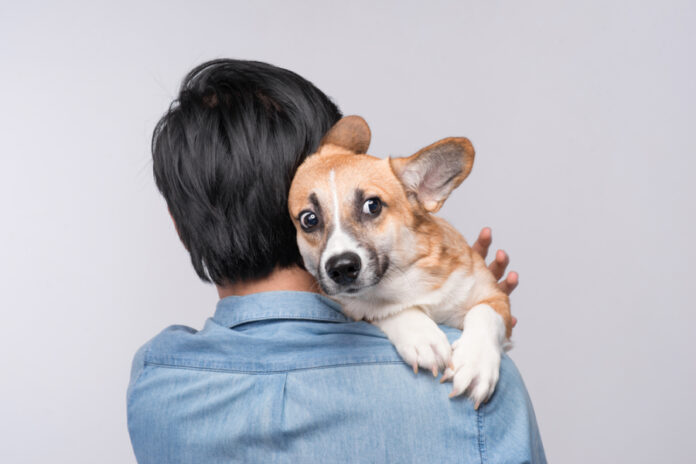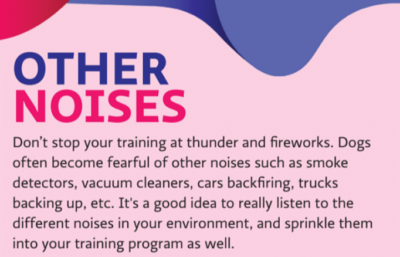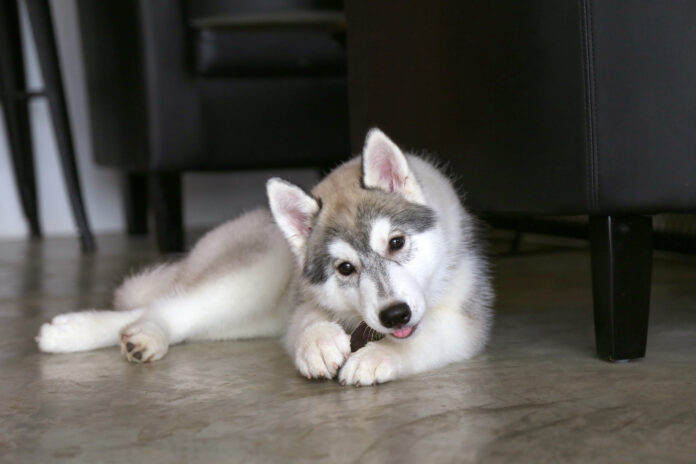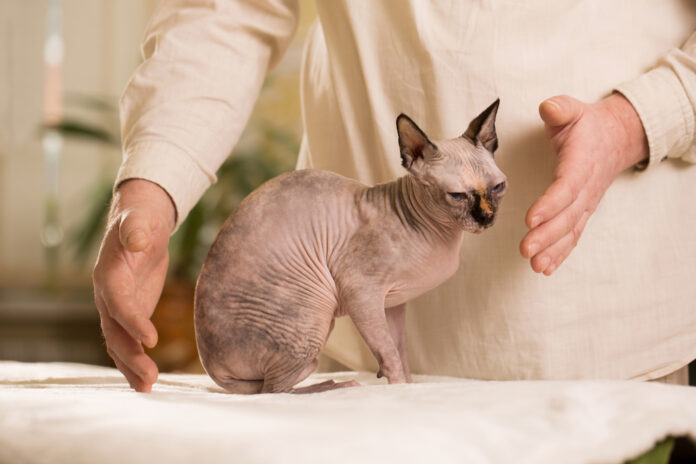Teach Your Dog Not to Fear Loud Noises

Thunder, fireworks, and other loud noises turn many dogs into nervous wrecks. Here’s how to prevent a fear reaction from developing in your own dog, so he’ll learn to take scary sounds in stride.
Do a quick internet search on how many dogs are afraid of noises like fireworks and thunder, and you’ll find around 30% suffer from this anxiety. That’s a lot of noise-phobic dogs. Noise phobia is one of the hardest behavioral issues to deal with because you can’t control either Mother Nature or neighbors celebrating the Fourth of July. Additionally, once a dog is in panic mode, there’s no room for reasoning. So it’s vital to start teaching your dog not to fear loud noises as soon as possible after you first bring him home.
GETTING STARTED
This preventive program is for dogs that do not already have a phobia of loud noises. If your dog or puppy is already severely frightened by fireworks, thunder and other noises, seek the help of a canine behaviorist. Don’t assume he’ll outgrow his fear because that typically doesn’t happen. In fact, fears tend to escalate if not treated.
TIP: It’s important to not scare your dog during training.
What you want to do is slowly introduce various noises and pair them with something extra positive, fun, or tasty. In short, you’ll be teaching him that “noise = reward” That’s it. Your dog doesn’t do anything; this training is strictly about teaching him that something potentially scary is a very good thing. If he learns that something is good, he won’t be scared, worried, or concerned. That’s the goal.
DESENSITIZATION AND COUNTERCONDITIONING
Thunder
Grab some incredibly tasty dog treats, such as cooked or dehydrated meat. Hop online  and search for thunderstorm sounds. Turn the volume down so it’s just audible, and hit play on the thunderstorm track. When you hear that first crack of thunder, toss your pup a treat. Repeat the process after each rumble. If your dog is showing no signs of worry, increase the volume slightly, and once again toss a treat at each rumble of thunder. Remember, you are just teaching your dog that thunder means good things and bonuses. This is the counterconditioning part.
and search for thunderstorm sounds. Turn the volume down so it’s just audible, and hit play on the thunderstorm track. When you hear that first crack of thunder, toss your pup a treat. Repeat the process after each rumble. If your dog is showing no signs of worry, increase the volume slightly, and once again toss a treat at each rumble of thunder. Remember, you are just teaching your dog that thunder means good things and bonuses. This is the counterconditioning part.
Training sessions can be short and sweet. Two to five minutes is all you need to make an impact. Each time you set up a training session, find a different audio track; or even better, practice in a different location. You want to try to make it feel as real as possible and not just a training setup.
TIP: At the start of each session, turn the volume lower than where you had it at the end of the last session. In other words, if you ended your last training session at a volume of five, start with three or even two on the next, and work up again. Slow and steady wins the race.
Fireworks
The other biggie is fireworks. As you can probably guess, the setup will be very similar to your thunder training. However, instead of waiting for the end boom of the firework, start rewarding your dog when you hear the whistling that comes before the explosion. Again, start with the volume very low and gradually increase it over time.
Real-life training
Along with creating the above training scenarios, take advantage of real-life situations as well. I’m a firm believer that a good training program means having tasty treats on me at all times. Why? Because I never know when a car is going to backfire or a jackhammer might start up. When they do, I immediately feed my dog a tasty treat.
as well. I’m a firm believer that a good training program means having tasty treats on me at all times. Why? Because I never know when a car is going to backfire or a jackhammer might start up. When they do, I immediately feed my dog a tasty treat.
TIP: Every noise can be used as a valuable training lesson.
Dogs go through various fear periods during the first two years of their lives, especially year one. When I brought my new puppy home, I started actively working on noise phobia prevention in his first year. Now, at age 13, he doesn’t even lift his head for any kind of noise!




